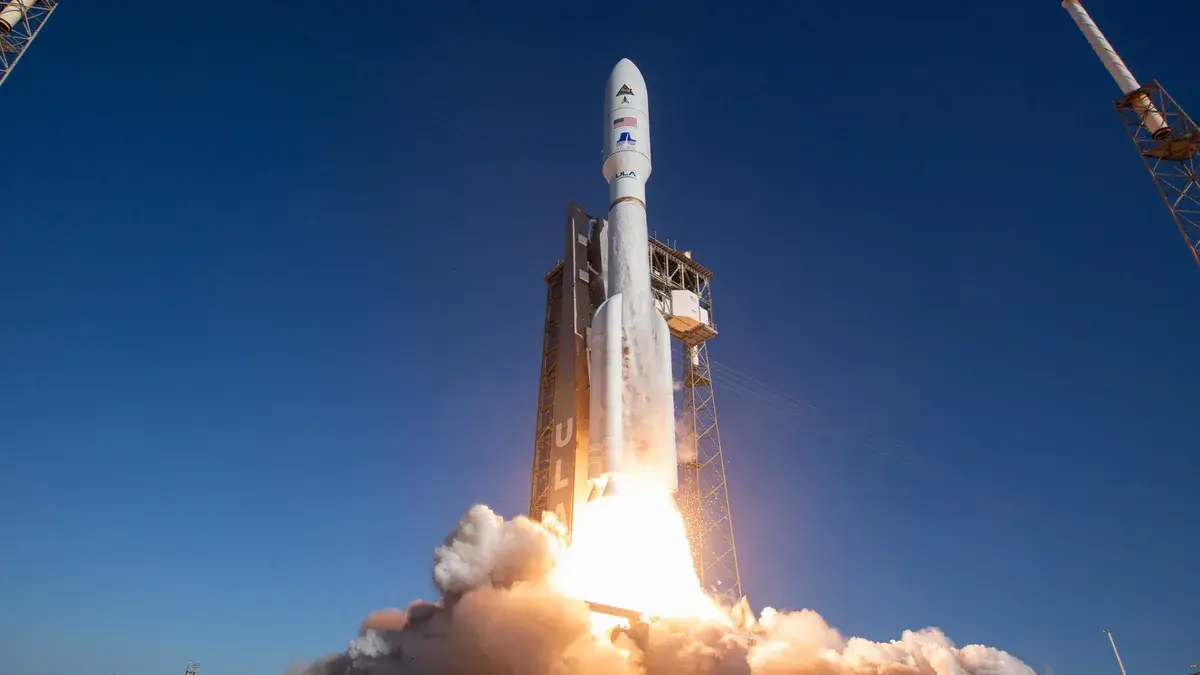
By Christopher McFadden,
Published by Interesting Engineering, 11 September 2023
After announcing the existence of the ‘Silent Barker’ mission last month, the first batch of an unknown total of new NRO and Space Force space observation satellites is now in orbit.
The US National Reconnaissance Office (NRO) and Space Force have launched its newest space observation satellites. As part of the highly secretive mission ‘Silent Barker’, the new satellites will be used to “keep an eye” on other nations’ satellites. Launched yesterday (September 10, 2023), the satellites were ferried to space aboard a United Launch Alliance Atlas V rocket from the Space Force’s base at Cape Canaveral, Florida, a press release said.
Eyes in the sky
Once the satellites are fully up and running, they will, by all accounts, identify and “watch” for potentially nefarious activities. They will operate in geosynchronous orbit (GEO) around 22,000 miles (35.406 km) above the surface of the Earth.
“Working together, we’ve developed a system in a relatively short amount of time that is going to provide us with unprecedented coverage of what’s going on in the GEO belts,” explained NRO director Christopher Scolese told reporters during an Aug. 28 pre-launch briefing.
The mission was originally scheduled for August 29 but was postponed due to weather conditions. The ability to monitor activity in space, particularly in the GEO space, has become increasingly important for the Space Force and NRO due to potential aggression from adversaries such as Russia and China. For example, in 2020, General Jay Raymond, former Chief of Space Operations, disclosed that two Russian satellites were following a US spy satellite, which he deemed as “unusual and concerning” behavior.
The Space Force relies heavily on ground-based sensors to observe space, which can only detect objects as large as basketballs and do not provide the desired level of detail. The Silent Barker system is expected to provide more accurate and detailed information. Lt. Gen. Guetlein, the then-Chief of Space Operations for the Space Force, stated in a briefing that having sensors closer to the area of interest will allow for better object movement tracking.
“By actually moving the sensor into orbit with those objects, they can not only detect smaller objects, but maintain custody of them,” he said.
In December 2017, the agencies declared their intention to collaborate on the ‘Silent Barker’ mission as a substitute for the now outdated Space-Based Space Surveillance System (SBSS) satellites, which will expire in 2028. According to Scolese, the team established an acquisition strategy in 2020 and spent approximately three years constructing and planning to launch the satellites. To this end, the Space Force has requested $115.6 million for “Silent Barker,” which is scheduled to be fully operational by 2026.
While publicly available information on the differences between ‘Silent Barker’ and the SBSS is thin on the ground, Scolese has hinted at the fact that ‘Silent Barker’ is vastly different from its predecessor constellation. The number of satellites launched on the Sept. 10 mission was also not disclosed, but we know there was more than one satellite. However, we also do not know how many satellites the final constellation will comprise.
Worst kept secret
As we reported back at the end of August this year, this highly secret mission was surprisingly made public for no apparent reason. But, there may be some logic to the move. “A huge element of deterrence is the ability for the adversary to know what we can and cannot see,” he said. “We actually want our adversaries to know that we have eyes in GEO, that we can see what’s happening.”
See: Original Article





